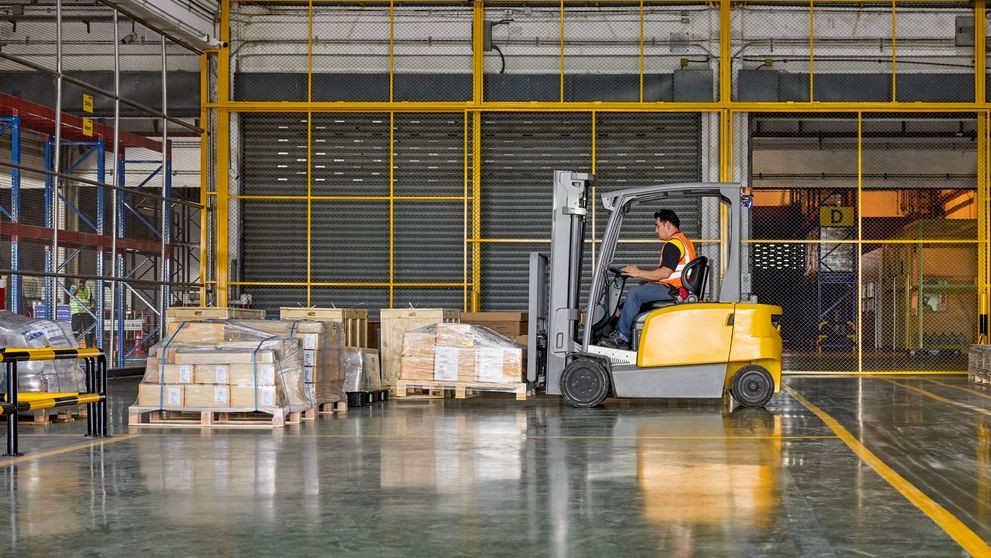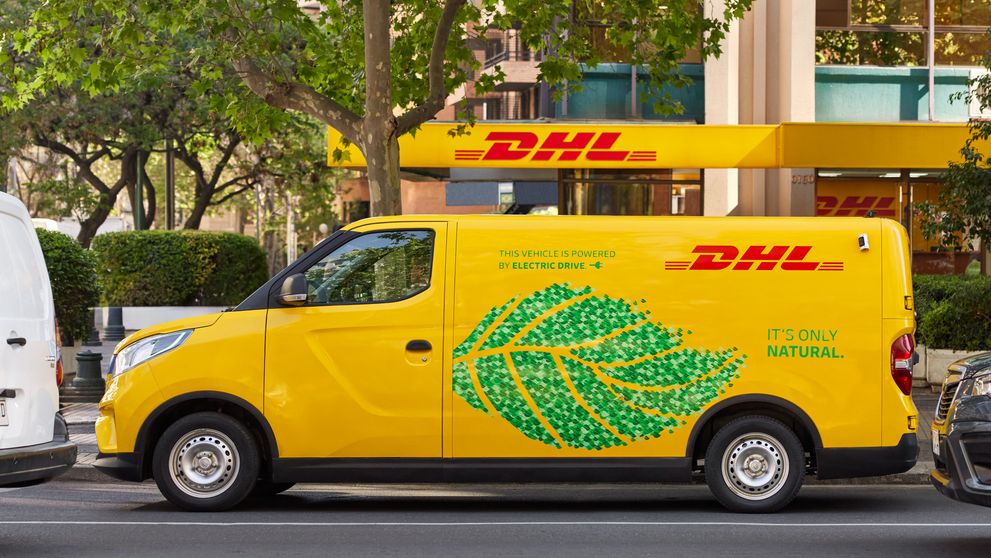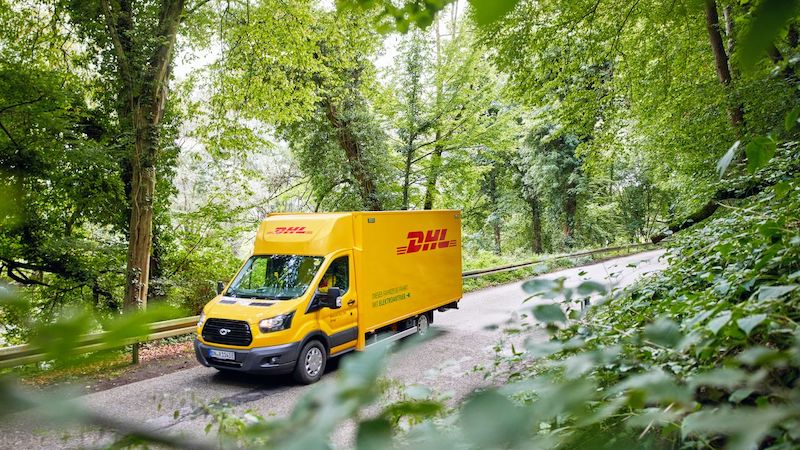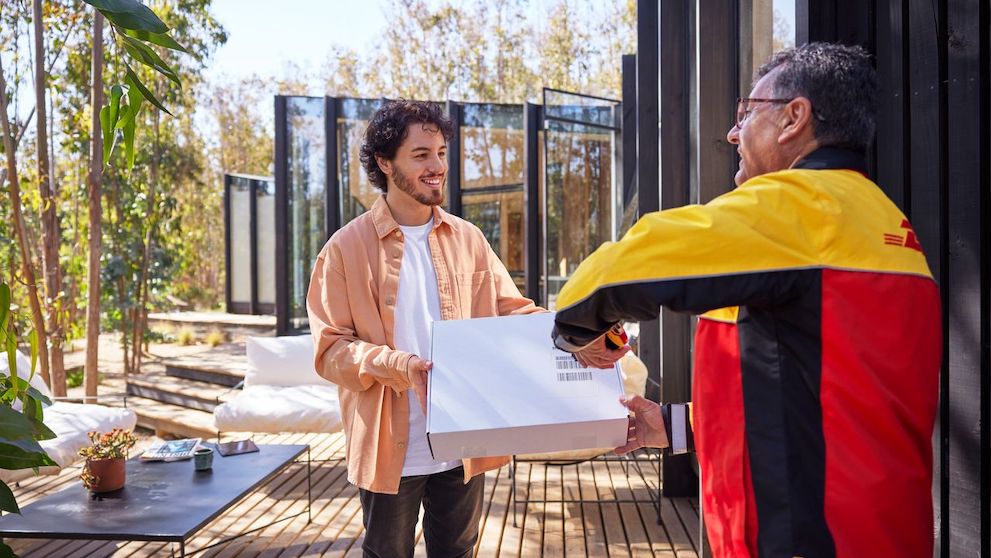What is green logistics?
Eco-conscious consumers and government policy are putting increasing pressure on businesses to adopt greener, more sustainable practices in every aspect of their supply chain. And that includes logistics.
In fact, ‘green logistics’ and ‘sustainable logistics’ are terms you’re probably reading and hearing more frequently than ever before. But what is green logistics, in fact?
Put simply, green logistics references ways of minimizing the environmental impact and the carbon footprint of logistics activities – activities like transport, packaging, recycling and storage. Here’s how your business can implement some key green logistics strategies.
Green logistics strategies for your business to follow
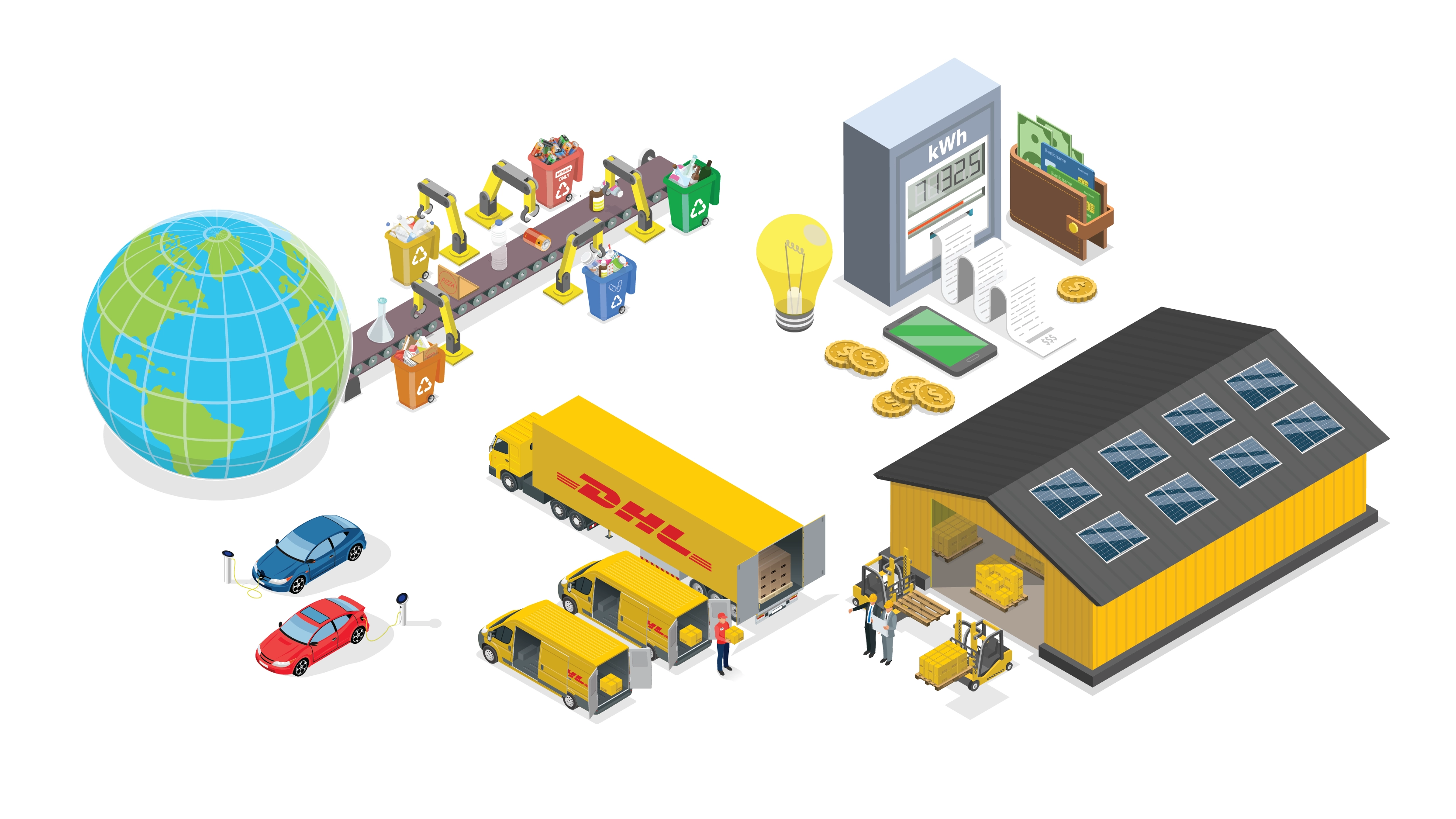
1. Implement green warehousing
A key part of sustainable supply chain management lies in the warehouse. There are several steps you can take to reduce its carbon footprint:
- Invest in a Warehouse Management System. This will enhance efficiencies across your warehouse – from ensuring you use space in the most optimal way, to maintaining stock levels. For the latter, this will reduce excess inventory, which, if unsellable (e.g. perishable goods), may end up in landfill.
- Identify areas of energy wastage. An Energy Management System will monitor your warehouse’s energy consumption and make recommendations for better efficiency – saving your business money and helping it to meet sustainability goals.
- Switch to eco-friendly lighting in your warehouse. Light-emitting diode (LED) bulbs, for example, use up to 75% less electricity then standard fluorescent bulbs1.
- Consider rooftop solar panels. An environmentally friendly, renewable source of energy, these require some upfront investment but will save your business money in the long term.
- Implement efficient waste management. Dedicated recycling banks at key touchpoints in your warehouse will help to reduce the amount of waste sent to landfill.
- Research what energy grants are available to help you make changes. Some governments offer funds to small businesses to cover things like installing EV (electric vehicle) charge points.
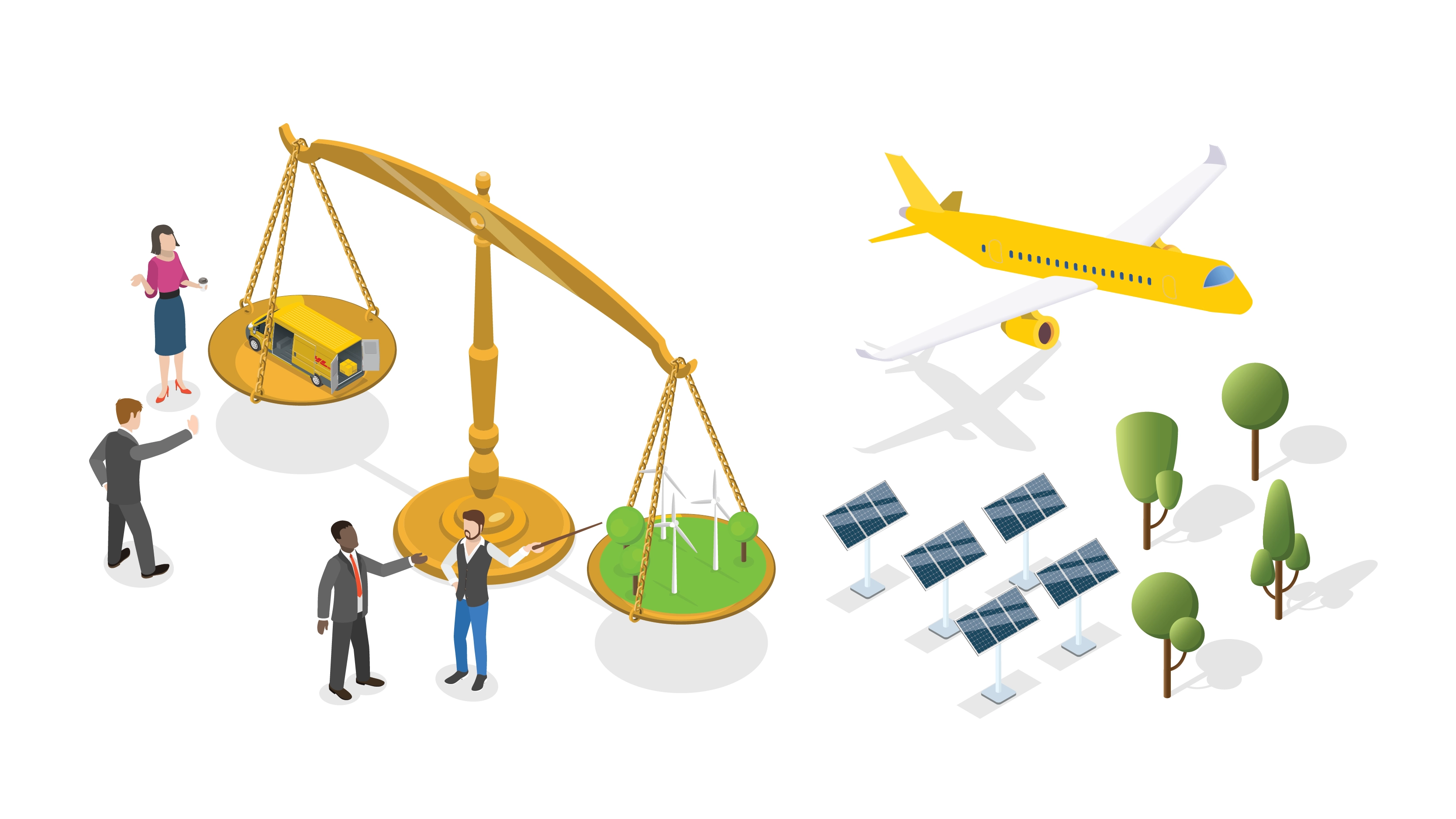
2. Set carbon-neutral logistics targets
It’s estimated that up to seven types of packaging material go into a single parcel: tape, cardboard boxes, styrofoam padding and bubble wrap are common ways to protect goods during transport.
Worse still, much of it is plastic. In fact, packaging accounts for almost a third of all plastics production – but only 14% of it is recycled, according to a joint report by the World Economic Forum and the Ellen MacArthur Foundation.
So packaging makes a big contribution to the world’s catastrophic plastic waste problem. And with the increase in e-commerce, that contribution is set to get bigger.
The solution? Green packaging.
Big businesses are increasingly adopting it. Computer hardware giant, Dell, for example, pioneered the use of bamboo packaging to protect some of its products during transport. It’s an easily renewable and incredibly durable source with strength equivalent to steel. Dell is also testing material such as pulp from sugar cane and mushrooms to create a biodegradable alternative to styrofoam.
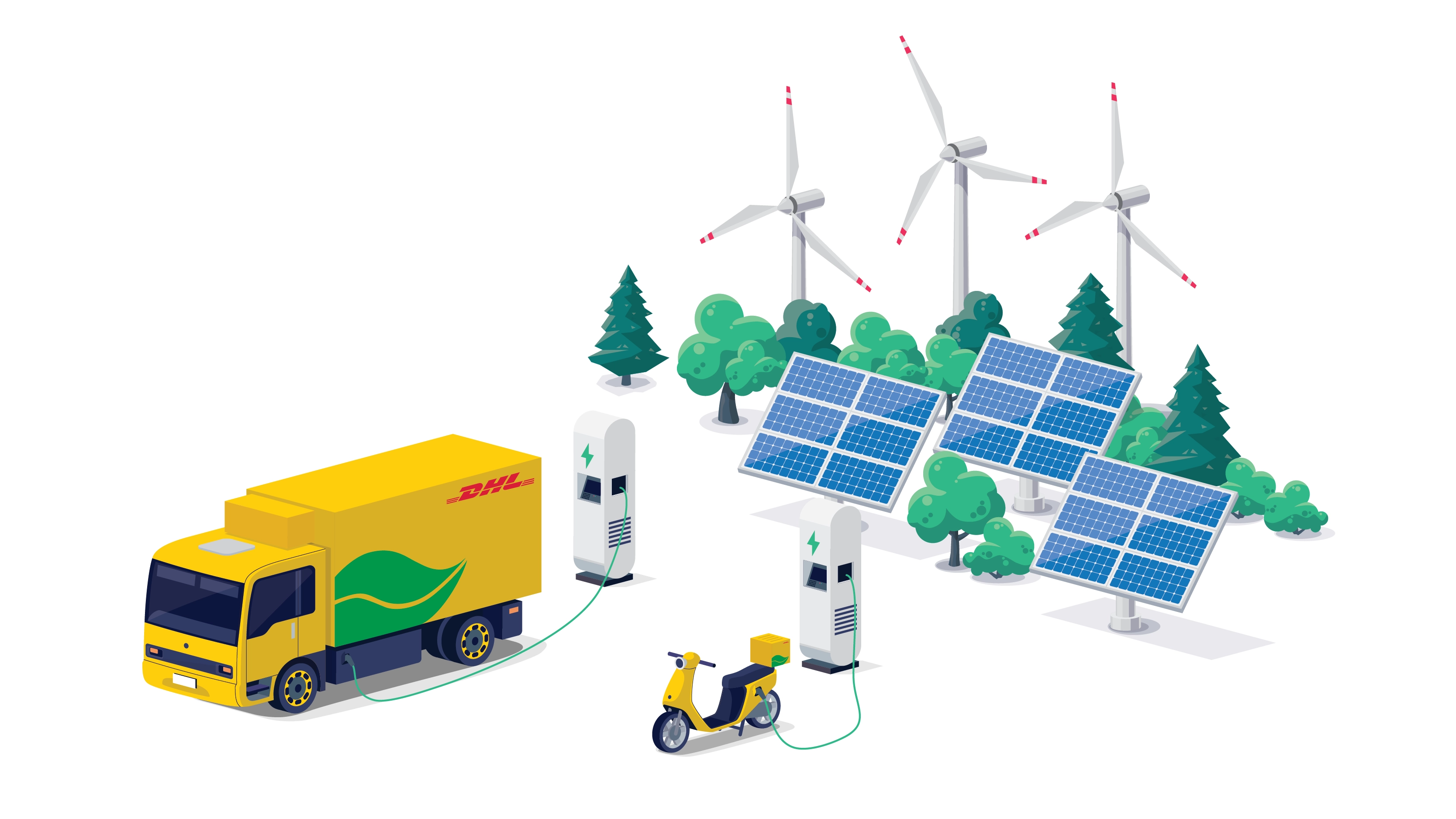
3. Adopt eco-friendly transport methods
What you can do
Here are some suggestions on how you too could switch to green packaging:
- British firm Woolcool has developed a sustainable, insulated packing option from sheep’s wool, which can maintain products in chilled, frozen and room temperatures and be re-used four times.
- Huidu Huanbao, a Chinese company, has developed a green recyclable packaging box which can be reused up to 14 times.
- Noissue creates made-to-order, custom packaging, with every product 100% reusable, recyclable or compostable.
These are just three of an increasingly wide range of green packaging options. See if you can source one to suit your product and business.
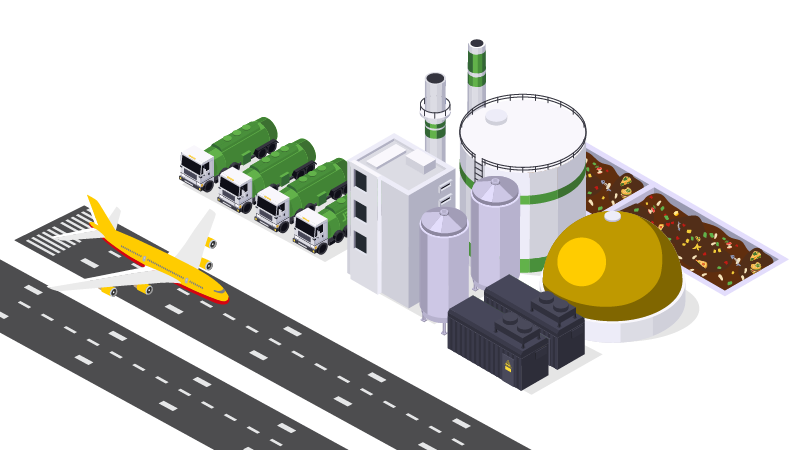
4. Explore sustainable fuels
DHL Express’s GoGreen Plus is a dedicated solution to help businesses reduce the carbon emissions associated with their shipments through the use of Sustainable Aviation Fuel, a biofuel produced from renewable sources such as vegetable oils and agricultural crops. SAF is specifically designed to be used as a substitute for traditional jet fuel and can reduce greenhouse gas emissions by up to 80% compared to fossil fuels.
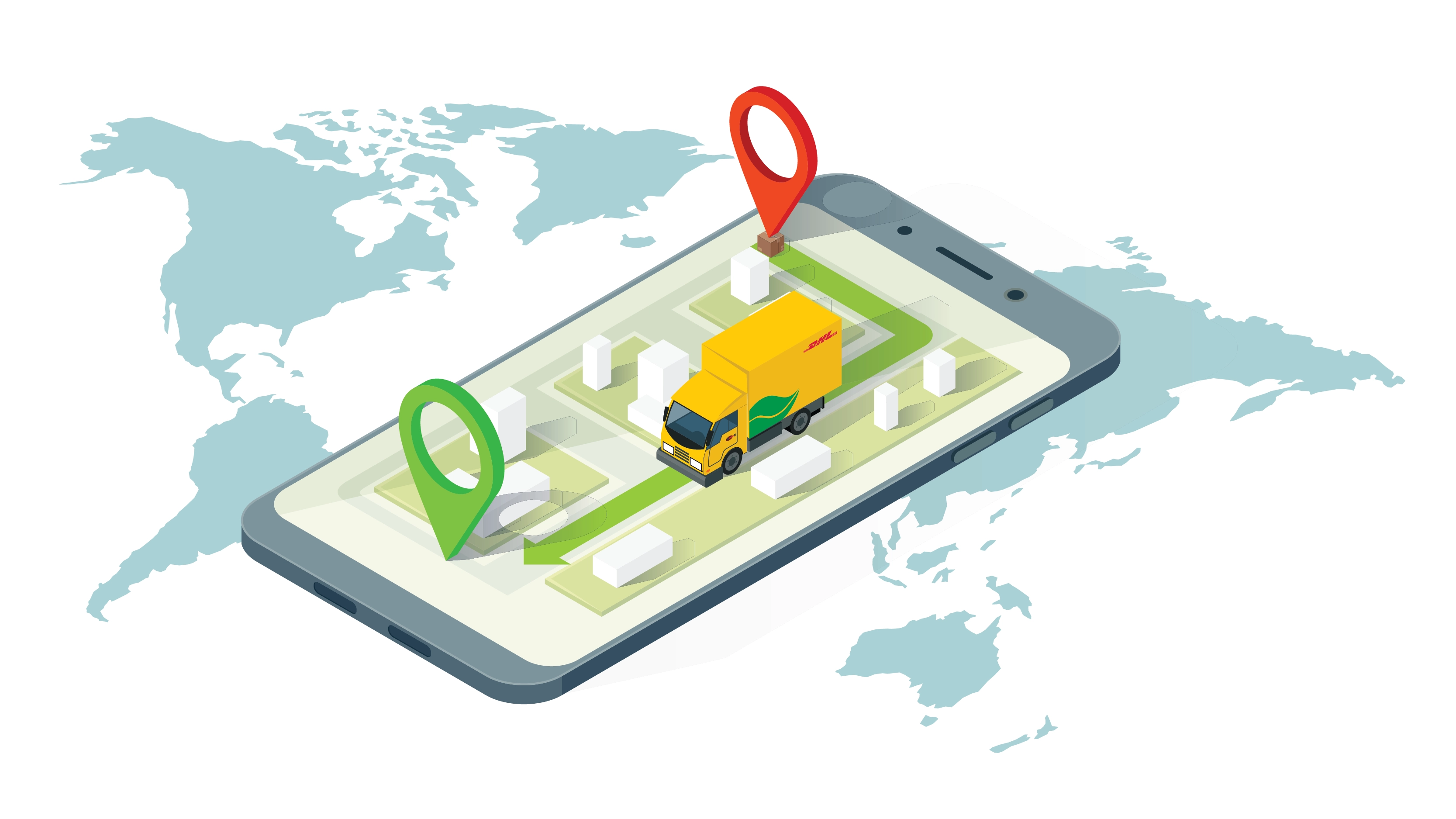
5. Leverage AI for greener deliveries
Planning for a green supply chain
Waste within your supply chain not only has a big impact on your emissions but also your bottom line. Whether that’s wasted employee time, due to a poor warehouse layout for example, wasted space in the warehouse, or wasted stock due to inadequate inventory planning. Smart technologies can help with reducing these types of waste and improving your yard logistics.
However, by far the most obvious obstacle to achieving a green supply chain is transport. Clearly, you need to move your product from your supplier to your warehouse and from there to your customer. But transport is a notorious contributor to greenhouse gas emissions.
One way to reduce its impact is by Route Optimization. By using Route Optimization tools you can reduce the time and distance to the destination, with no excess mileage, and hence lower fuel consumption – reducing both emissions and costs.
Training delivery drivers in eco-driving also helps – such as driving at the most fuel-efficient speed, whenever possible. And using greener fuel is an even better way to reduce your transport emissions. Most obviously, you can insist on the use of electric vehicles for road transport, but if you’re shipping cross-border, sustainable aviation fuel is now available too.
So there are plenty of ways you can get closer to a green supply chain.
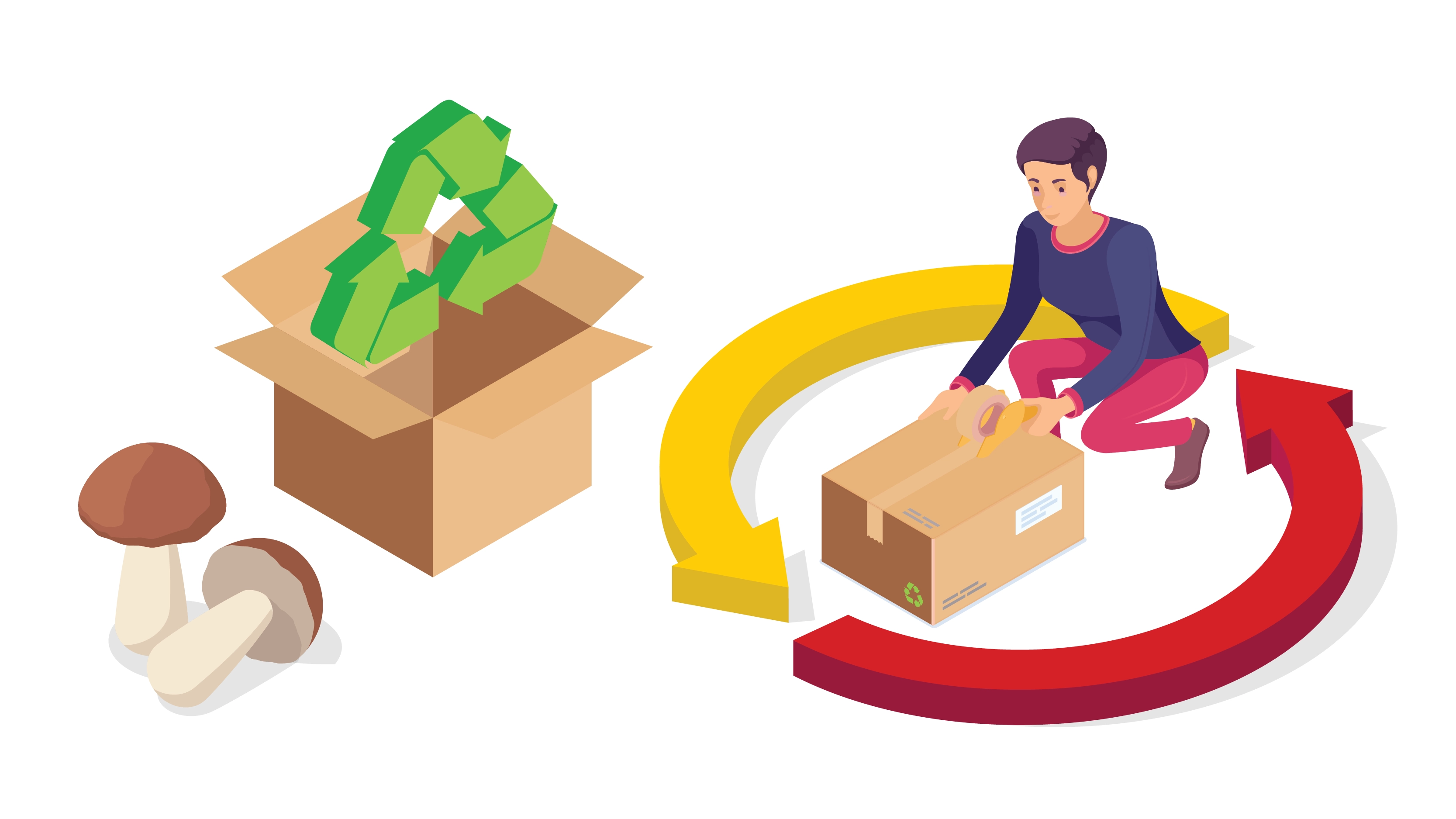
6. Use green packaging
What you can do
- Talk to DHL about Route Optimization. We have invested in Greenplan, a planning solution which uses a unique algorithm, which even considers local traffic flow and the time of day.
- Ask about sustainable solutions for your road transport. At DHL, we’ve been using electric vehicles for many years now – around 20% of our fleet is zero-emissions vehicles. And we aim to electrify 60% of our ground fleet by 2030.
- Ask about green alternatives for shipping via air. Offsetting CO2 is one option, but insetting is a way how you can really help to reduce CO2. Ask us about our Sustainable Aviation Fuel (SAF) service and we can help you to directly reduce your own Scope 3 footprint. We’ve recently made one of the largest SAF deals in history, with BP and Neste committed to supplying us with over 800 million liters until 2026.
- CO2 savings on a lifecycle basis for this deal only is estimated to be equivalent to annual greenhouse gas emissions of approx. 400,000 passenger cars.
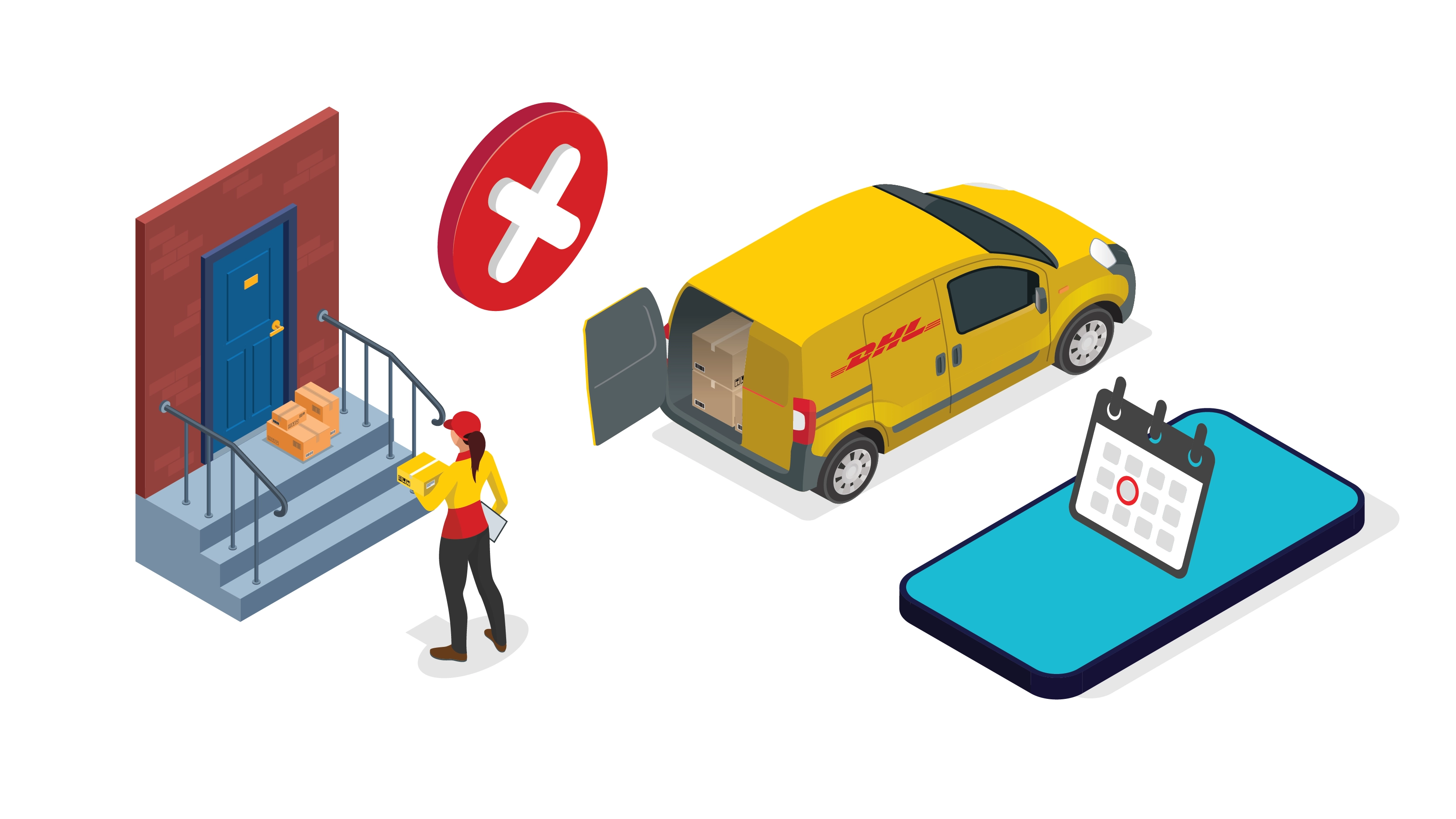
7. Reduce failed deliveries
Every failed delivery attempt to one of your customers means extra transport emissions for your business. DHL Express’ On Demand Delivery is the solution – your customers can choose a delivery time that suits them or even elect to have it left with a neighbor if they know they’re not going to be in. Happier customers, happier planet!
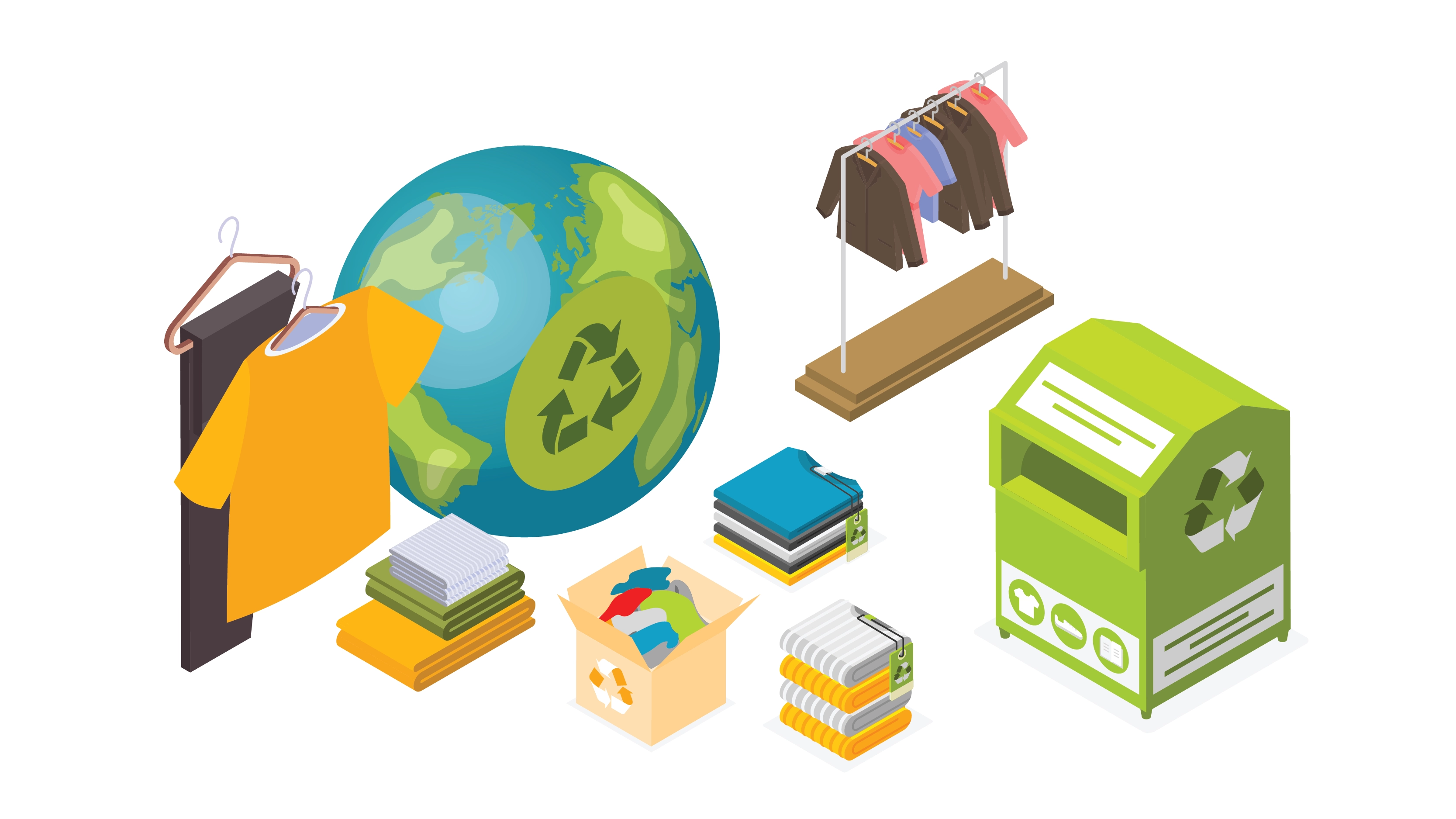
8. Implement reverse logistics
Product returns can be an expensive pain for online businesses, especially if the item is damaged or broken. But wait! Before you send it to landfill, consider a reverse logistics strategy. This promotes the repairing, recycling and resale of products, with the aim of extending their lifecycle. It will save your business money, too.
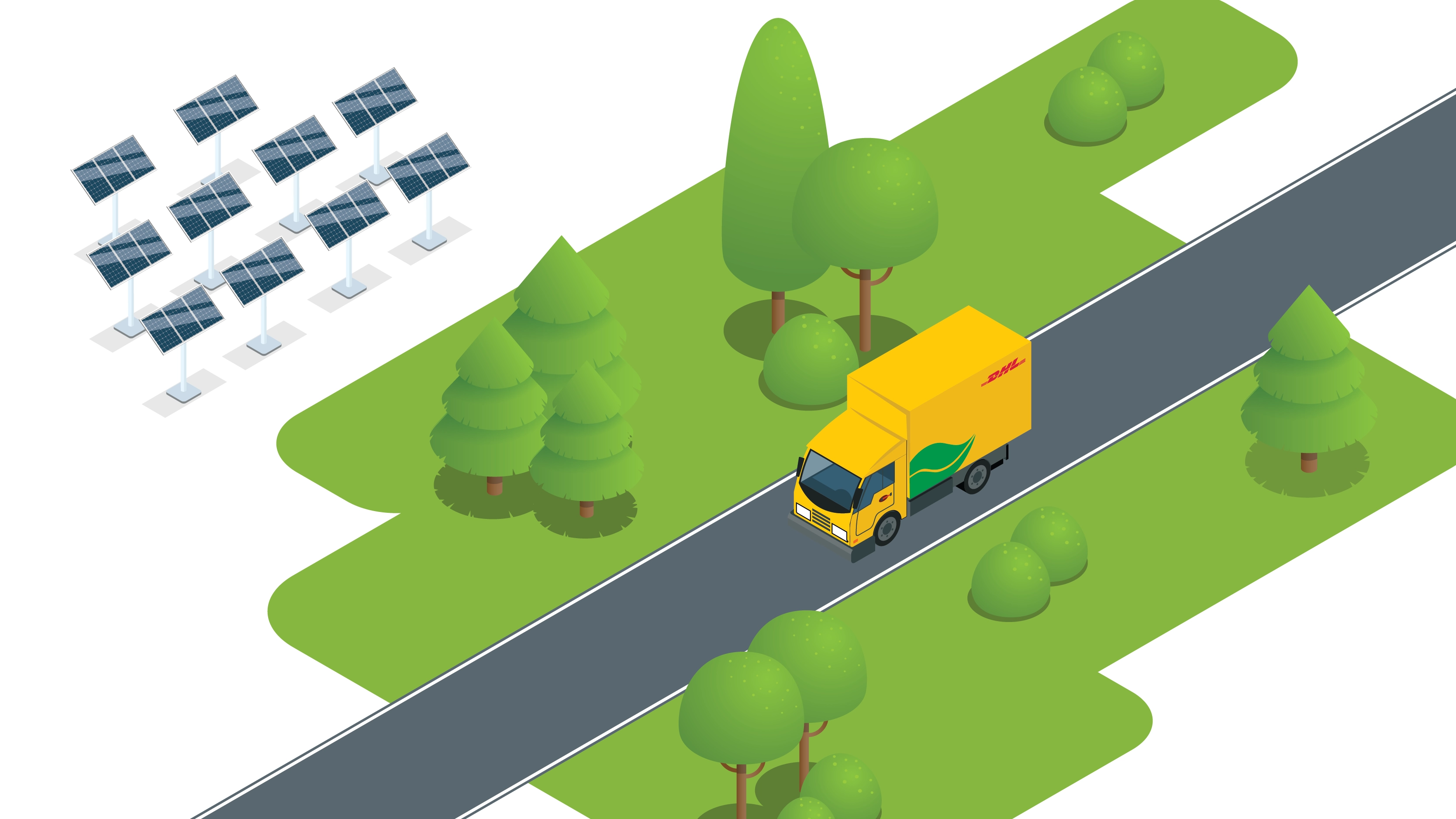
9. Choose green supply chain partners
Reducing returns – and handling them sustainably
A return automatically means an extra journey for your product, driving up associated CO2 emissions. So how to reduce returns?
You might think passing the cost onto the customer would lower the chances of them sending your product back. But nowadays many customers won’t even consider buying from an e-tailer that doesn’t offer free returns – so it’s better to reduce returns in other ways.
One way is to ensure your website has precise, detailed product descriptions and high-resolution photography and videos. That way, customers can see exactly what they are buying and there are no surprises on receiving the product – making returns less likely.
Another way is to use appropriate packaging to avoid damage in transit. Damaged goods will need returning and probably replacing too – meaning more additional transport and yet more emissions.
Of course, you’ll never eradicate returns completely. But you can ensure you handle them as sustainably as possible too, by providing green packaging for customers to re-use, for example.
FAQs on green logistics for small businesses
Green logistics involves implementing sustainable practices to minimize the environmental impact of the logistics network. Examples include using electric vehicles throughout the supply chain, adopting recyclable packaging, and optimizing delivery routes to reduce fuel emissions.
The logistics and transport sector contributes just over a third of global carbon dioxide (CO2) emissions2 – a share that’s forecast to grow. The pressure is now on businesses of all sizes to play their part in reducing the figure and protecting the planet’s future.
A study by Capgemini3 found 79% of customers alter their purchasing habits in response to social responsibility, inclusivity, or environmental impact, meaning they are more likely to shop with a business that demonstrates green logistics practices. In addition to enhancing their brand image, such businesses will also benefit from reduced operating costs (due to waste reduction) and increased efficiencies.
There are lots of eco-friendly logistics solutions for businesses to consider – from using electric vehicles for deliveries to implementing an energy management system within their warehouse. There are plenty of smaller changes, too – switching to recyclable packaging is relatively easy and can make a big difference!
Some practices – such as installing solar panels for energy – will require some initial investment, but the long-term savings to your business will make it worthwhile.
DHL has tipped decarbonization, renewable energy and AI as three big trends set to influence the green logistics landscape in 2024. Discover what that means for your business, and actionable strategies it can implement, here.
With a DHL Express Business Account, you’ll benefit from a range of dedicated green logistics solutions – and, of course, fast and reliable delivery!
Carbon offsetting and carbon insetting
You’ll probably be familiar with the term ‘carbon offsetting’ but possibly not ‘carbon insetting’. So what do they mean and what’s the difference?
At its most basic, carbon offsetting is when a company pledges to a customer to plant a tree to offset the CO2 emissions associated with their purchase. In other words, carbon offsetting schemes involve businesses contributing to external climate protection projects to offset their carbon emissions.
Carbon insetting is a relatively new idea. It has been developed as a way of addressing a company’s carbon footprint within its own supply chain. Rather than contributing to external projects that are totally outside a business’s influence, carbon insetting projects aim to avoid or reduce emissions that are directly related to the business. So an organization will collaborate with others in the same supply chain to introduce greener, more sustainable strategies and practices.
For example, here at DHL we have joined United Airlines’ Eco-Skies Alliance program as a way of collaborating with like-minded companies across the aviation value chain. Together, our objective is to fund the purchase of Sustainable Aviation Fuel (SAF) and help decarbonize the sector. This is one pillar of DHL’s own carbon insetting program.



